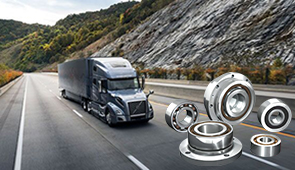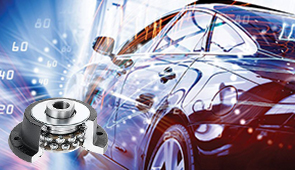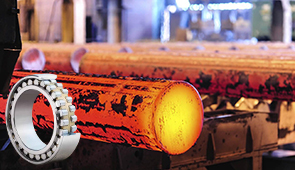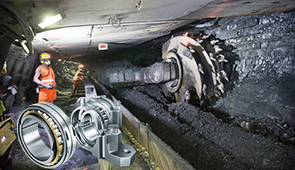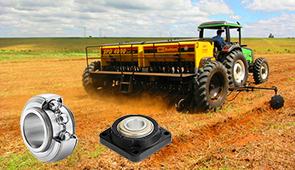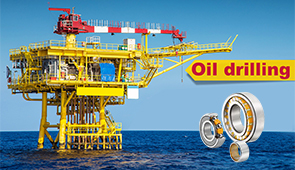Understanding the Differences: Journal Bearing vs Roller Bearing
Bearings are an integral component in the realm of mechanical engineering and industrial machinery, designed to reduce friction and support loads between moving parts. Among the numerous types of bearings used across various applications, journal bearings and roller bearings stand out as two primary and distinct categories. While both serve the core purpose of facilitating smooth motion, they operate based on fundamentally different principles and suit different operational conditions. This article aims to provide a detailed comparison between journal bearings and roller bearings, exploring their design, functionality, advantages, limitations, and typical applications. By doing so, readers will gain a comprehensive understanding of when and why each type is used in engineering and industrial contexts.
What is a Journal Bearing, and How Does it Work?

Definition of Journal Bearing
A journal bearing is a distinct category of plain bearing. A shaft, or journal, rotates within a cylindrical supporting member. Unlike rolling element bearings, sliding journal bearings function on the principle of sliding motion using thin film lubricant. The primary parts are the journal (rotating shaft), bearing surface (stationary housing), and lubricant. Such bearings can be found in turbines and compressors and in heavy continental machinery which operate at low speeds but with high load capacity.
- Load Capacity: Capable of sustaining heavy static or dynamic loads up to a couple of tens of thousands of pounds.
- Operating Speed: Moderately worded speeds. Spd can be higher, allowing for hydrodynamic lubrication.
- Lubricant Viscosity: The viscosity is mostly 10-100 centipoise, which differs from operational demands.
- Clearance: A small space between the shaft and the bearing master, usually 0.001-0.005 in. The space enables lubricant flow and pressure creation.
- Material: Babbitt bronze or any other low friction alloys.
Complying with these factors allows for achieved accuracy in functioning for durable and great load carrying capability.
How Friction is Managed in Journal Bearings
The friction in journal bearings is alleviated by hydrodynamic lubrication, which utilizes a thin film of lubricant that separates the surface of the bearing from the journal. It keeps metal contacts from rubbing against each other directly, which leads to wear and energy loss.
- Lubricant Viscosity: The viscosity of the lubricant determines the stability of the film. Mid-viscosity oils are typically preferred so that the film does not have too much strength that it creates resistance to motion.
- Operating Clearance: The gap that exists between the journal and bearing, which is usually between 0.001-0.005 inches, is balanced to ensure that there is enough lubricant flow as well as pressure formation.
- Rotational Speed: High speeds of the journal assist in developing a strong hydrodynamic film however they must be managed to prevent overheating and destruction of the lubricant.
- Surface Finish: The surfaces of the journal and bearing should be well machined with roughness of 16-32 microinches (Ra) so that frictional resistance is minimized as well as effective film formation can take place.
If these factors are closely monitored, journal bearings may function with extremely low friction, which optimizes efficiency and increases the service life of the bearing and the entire mechanical system. The proper adjustment of lubrication conditions is crucial to maintaining high performance under variable load conditions.
Exploring Roller Bearings: Types and Applications
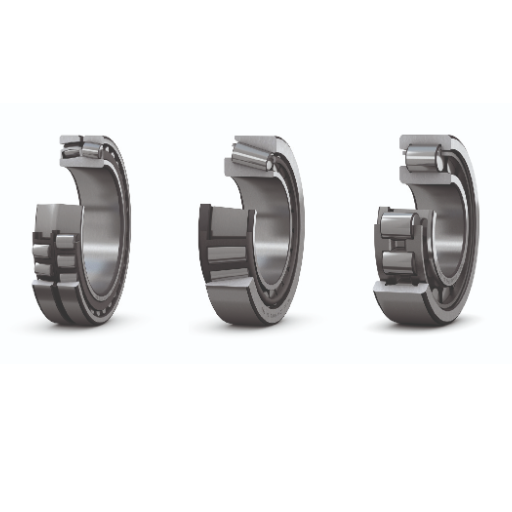
Understanding the Roller Bearing Structure
Roller bearings are machine parts that are used to minimize friction while supporting rotator wheel and axle movements. Its structure typically consists of four components:
- Inner ring: This is fitted on the shaft and provides an inner raceway for rolling elements.
- Outer ring: It encloses the assembly and acts as the outer raceway for the rolling elements.
- Rolling elements: These are cylindrical, spherical, or tapered elements that facilitate movement and minimize friction.
- Cage: The cage prevents the rolling parts from touching and decreases wear and tear.
Every application has distinct requirements concerning these details. The construction of roller bearing’s parts like dimensions and materials depends on ease of use factors such as operation speed, load range, and area circumstances.
Types of Rolling Element Bearing
- Tapered Roller Bearings: These rollers have an angle, which gives them an advantage when it comes to balancing both radial and thrust loads. This feature gives the tapered roller added versatility since they used to be used only in automobiles and heavy machinery.
- Spherical Roller Bearings: Conical shaped rolling elements allows for Tapered roller bearings to carry out combined axial and radial loads. This type of bearing is well suited for machineries hubs and automobile wheels.
- Needle Roller Bearings: The slender cylindrical roller-shaped parts of this type of bearing make it best for small spaces with average to higher radial loads.
- Cylindrical Roller Bearings: This type of bearing is single row and has its unique shape. Their unique shape, however, aids heavily with radial strength, being ideal where stiff rolling is required.
- Ball Bearings: Able to carry both radial and thrust loads, this type has the broadest application enjoyed in high-speed and light to moderate-load usage due to their relatively low friction.
Every type has its benefits that address differing industrial needs, which is why it’s always important to consider operational demands and the environmental conditions before selecting a rolling element bearing.
Differences Between Journal and Roller Bearings
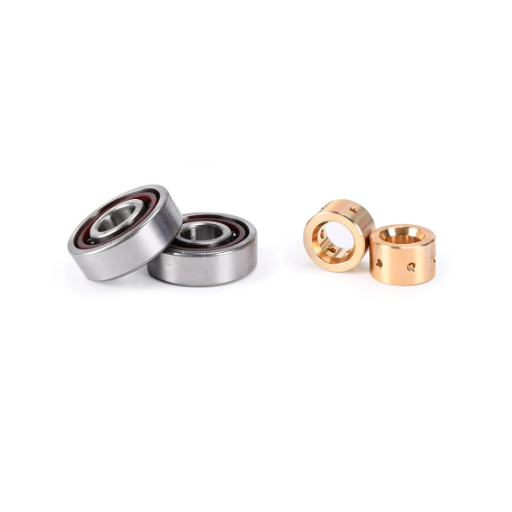
Structural Differences: Journal vs Roller
There are notable differences that exist between journal bearings and roller bearings in their structure and how they function. A journal bearing includes a shaft or journal that is smooth and can revolve in a plain cylindrical cover. A load is taken care of by a thin film of lubricant, which minimizes friction by creating hydrodynamic or boundary lubrication circumstances. This type of bearing is preferably used in high-speed and low-load applications owing to their ability to perform with little metal-to-metal rubbing. Surface roughness, clearance, and lubricant viscosity are key technical requirements for journal bearings since they affect the performance and lifespan of the bearing.
In contrast, roller bearings have an inner and outer race with rolling features that include cylindrical, spherical, and tapered rollers fitted between them. Compared to solid surfaces, these elements greatly reduce friction, especially in radial and axial load situations when these bearings are needed. For low-rotation-speed applications requiring high-load capacity, roller bearings are the best fit. Static and dynamic load rating, dimensions of rolling elements, and their internal clearance are important features to consider for roller bearings because to meet operational requirements, they must bound to these bears.
Leveraging the different structural aspects guarantees that the most appropriate bearing type is chosen in relation to the requirements of the application while optimizing speed, load conditions, and the surrounding environment.
Maintenance and Lubrication Requirements
Both friction bearings and rolling motion bearings depend on regular maintenance and servicing to enhance their lifespan. With friction bearings, the greatest priority is placed on the reduction of wear due to direct surface contact. Therefore, high viscosity lubricants capable of forming a strong film under extreme load conditions need to be deployed. This practice usually entails periodic greasing or oiling with ISO VG 150 or greater spec oils depending on the speed and load the bearing is operating on.
In the case of rolling motion bearings, lubrication is applied to minimize rolling resistance and metal-on-metal contact within the rolling elements themselves. Such lubricants must have unique components that resist oxidation and corrosion and should typically lie between ISO VG 32-100 for medium-speed applications. For high-speed applications, low viscosity, high thermal stability synthetic oils or synthetically based greases are the recommended means of lubrication.
The stated guidelines help determine maintenance servicing intervals, which depend crucially on the operational speed (n), load (P), and temperature (T). For instance, rolling bearings working at higher speeds, such as those above 10,000 RPM, and at high temperatures may need lubrication after every 500 – 1,000 hours of operation. In contrast, low-speed friction bearings may go for 2,500 to 5,000 hours before requiring maintenance. The implementation of advanced condition monitoring systems such as vibration analysis or thermal imaging can help further optimize servicing intervals, as well as detect early signs of wear or lack of lubrication.
Benefits and Drawbacks of Journal Bearings
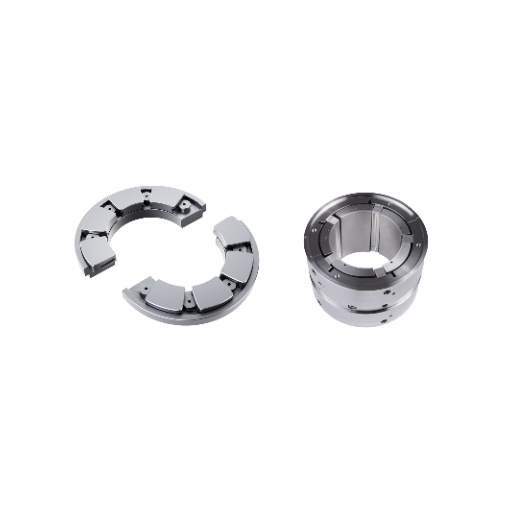
Advantages of Fluid Film Bearings
Fluid film bearings are especially suitable in high-performance industrial applications because of their several advantages. To start with, the ability of fluid film bearings to function at low frictional and viscous losses is a major advantage, particularly under high load and velocity conditions. A hydrodynamic or hydrostatic film is formed between the bearing surfaces using lubricant that is normally oil, grease, or synthetic fluids. This film provides coverage without leading to mechanical contact.
Moreover, fluid film bearings are well known for their remarkable load-carrying ability. With adequate lubrication, they can support loads higher than 5000 psi, and their ability to endure oscillatory motion is also great. In addition, they possess good damping capacity which is helpful in lowering vibration and noise, especially in rotating equipment such as turbines and compressors, which is helpful in ergonomic design with improved comfort.
Lastly, with proper maintenance and condition monitoring, their service life could be extended. Fluid film bearings also outlast anti-friction bearings when it comes to service life because of low mechanical and thermal stresses and sensitivity uinder well lubricated conditions, even beyond 120 degrees C.
Lastly, fluid film bearings are customizable in a way that they can be altered to meet specific operational needs. However, continuous supervision of the operational limits of minimum film thickness (in this case > 2μm for safety), operating temperature, the range of viscosity index (> 100 centistokes for standard applications), and pressure values assure efficacy and longevity in different applications.
Challenges in Using Journal Bearings
Controlling load and speed while attaining proper lubrication is one of the major obstacles in operating journal bearings. I would solve this problem by making sure the lubricant has the right viscosity for the working temperature and pressure. For example, a viscosity index greater than one hundred centistokes is usually required for stability with temperature changes. Also, to avoid destructive metal contact, it is essential to have a minimum film thickness of more than two microns. Film thickness that is too low will result in wear and decreased performance.
Another related challenge of concern would be thermal management. If there is too much heat that results from friction or rotational speed, it could break down the lubricant while reducing the effectiveness of the bearing. For this case, I would make sure that the operational temperature is kept within the limits where the lubricant does not thermally break down. Additionally, using them in places where effective cooling systems are integrated guarantees the reliability of the bearing in operation.
In conclusion, I have covered the problems of alignment and bearing geometry that tend to be neglected. Periodic shafts have to be aligned, provided that correct bearing geometry is maintained in order to avoid uneven distribution of bearing loads which causes unwanted premature wear. With consistent compliance to these determined technical requirements, the performance and lifespan of journal bearings operating on differing conditions are guaranteed.
Why Choose Roller Bearings?
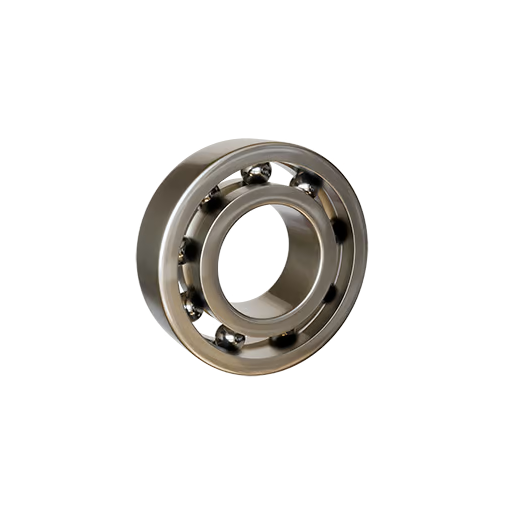
Benefits of Rolling Element Bearings
A rolling-element bearing can be used in many industries where accuracy and reliability are vital because it conveys numerous benefits. Lower frictional resistance is provided when using rolling element bearings when compared to plain bearings, which allow energy efficiency and heat generation to be maximized. This trait is especially significant to high-speed operations that require thermal stability.
Rolling element bearings enable unique, exceptional load-carrying capabilities since forces are evenly applied to the friction surfaces. Energy that is transferred to the bearing is regarded as defined axial and radial load capability parameters like dynamic load rating and static load rating, both essential values allowing for an optimal bearing choice depending on the needs that arise.
Reduced surface contact area allows these bearings to greatly minimize motion control, which in turn results in lower wear and longer operational life under certain load and speed conditions while complying with all applicable ISO and ANSI standards.
Rolling element bearings can be monitored using condition monitoring tools such as vibration analysis or thermographic inspection, making them effortlessly maintained as well as easily serviced.
When users optimize the dimensioning of bearings, they ensure performance. For example, one must keep the necessary shaft tolerance such as H7/g6 fit along with alignment within certain misalignment boundaries. These specific conditions are important to ensure the bearings’ performance and life, which is why these bearings are used in harsh industrial conditions.
Limitations of Roller Bearings
Even though roller bearings perform well in many areas, certain limitations must be managed to keep efficiency intact. First of all, these bearings cannot manage high axial loads effectively, particularly in situations when the load shifts rapidly along the axial direction. In addition, these bearings depend on the close fitting of the shaft and housing like H7/g6, H8/h7, which need alignment, and they get worn out prematurely.
Another problem is that lubrication of those bearings is critical. The wrong lubricant or bad lubrication can raise the friction and operational temperature and even cause failure. Following the manufacturer’s lubrication was suggested at intervals, and checking that the lubricant’s viscosity corresponds with the operational speed and temperature range is essential.
Additionally, roller bearings do not work well under particularly contaminated environments (ex. high levels of dust, moisture, or chemicals). Unless properly sealed or protected, these contaminants lead to pitting and corrosion or even surface level damage which decreases performance.
Finally, the effectiveness of these types of bearings is greatly reduced in high-speed situations due to their lower maximum RPMs when compared to ball bearings. Their uppermost speed, or RPM, is routinely determined by the type and design of the bearing in question. It is crucial to consider the application’s requirements so there is not greater reliability loss and fatigue is not worsened.
By fully considering these technical constraints and employing methods like rational fits, helpful sealing techniques, dependable lubrication methods, and appropriate load control, the bearing’s performance and life ina multitude of applications can be sustained, and enduring challenges can be eliminated.
Frequently Asked Questions (FAQs)
Q: What is the primary difference between journal bearings and roller bearings?
A: The primary difference between journal bearings and roller bearings is that journal bearings are typically cylindrical sleeve bearings that rely on an oil film for operation, while roller bearings contain rolling elements, such as balls or rollers, to support and guide rotating parts.
Q: How do ball and roller bearings differ from journal bearings in terms of load support?
A: Ball and roller bearings are generally better suited for supporting radial and thrust loads due to their rolling-element design, whereas journal bearings are typically used for heavy loads and shock loads because they provide a continuous surface contact through an oil film.
Q: What types of lubrication are used for journal and roller bearings?
A: Journal bearings are usually lubricated with oil to maintain a stable oil film, while roller bearings can be lubricated with either oil or grease to reduce friction and wear between the rolling elements and the bearing housing.
Q: Are roller bearings better than journal bearings for high-speed applications?
A: Yes, roller bearings are generally better suited for high-speed applications, as their rolling elements reduce friction compared to journal bearings, which rely on an oil film that can generate more friction at high speeds.
Q: What are plain bearings, and how do they relate to journal bearings?
A: Plain bearings, also known as sleeve bearings, include journal bearings. They consist of a simple, cylindrical sleeve and rely on a lubricating film, such as oil, to minimize friction between moving parts.
Q: Why are journal bearings used in heavy machinery?
A: Journal bearings are commonly used in heavy machinery because they provide robust support for heavy loads and can handle significant shock loads due to their continuous surface contact and the presence of an oil film.
Q: What are thrust bearings, and how do they differ from other types of bearings?
A: Thrust bearings are designed to handle axial loads, as opposed to radial loads. They are different from other types of bearings because they support the force parallel to the shaft, often using rolling elements similar to those found in ball or roller bearings.
Q: How do rolling-element bearings enhance performance in machinery?
A: Rolling-element bearings, such as ball and roller bearings, enhance performance by reducing friction and wear through their rolling components, allowing for smoother and more efficient rotation compared to journal bearings, which rely on an oil film.
Q: Can journal bearings be used in applications requiring precise movement?
A: While journal bearings are effective for heavy-load applications, they are not typically used in high-precision applications due to the potential for slight movements within the oil film. Ball and roller bearings are preferred for precise movements.
Q: What role does the bearing housing play in the function of bearings?
A: The bearing housing provides structural support and protection for the bearing, ensuring proper alignment and securing the bearing in place. It also helps contain lubrication, such as oil or grease, to maintain optimal performance and longevity of the bearing.
UCTH213-40J-300 with Setscrew(inch)
CNSORDERNO: Normal-duty(2)
TOGN: UCTH213-40J-300
SDI: B-R1/8
SD: 2 1/2
UCTH212-39J-300 with Setscrew(inch)
CNSORDERNO: Normal-duty(2)
TOGN: UCTH212-39J-300
SDI: B-R1/8
SD: 2 7/16
UCTH212-38J-300 with Setscrew(inch)
CNSORDERNO: Normal-duty(2)
TOGN: UCTH212-38J-300
SDI: B-R1/8
SD: 2 3/8
UCTH212-36J-300 with Setscrew(inch)
CNSORDERNO: Normal-duty(2)
TOGN: UCTH212-36J-300
SDI: B-R1/8
SD: 2 1/4
UCTH211-35J-300 with Setscrew(inch)
CNSORDERNO: Normal-duty(2)
TOGN: UCTH211-35J-300
SDI: B-R1/8
SD: 2 3/16
UCTH211-34J-300 with Setscrew(inch)
CNSORDERNO: Normal-duty(2)
TOGN: UCTH211-34J-300
SDI: B-R1/8
SD: 2 1/8










